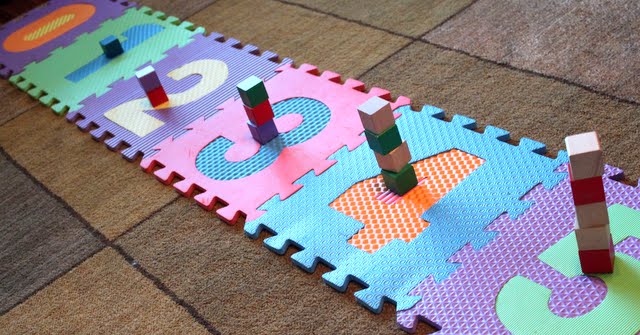Children at this stage are taking in a wealth of information through play and daily activities, learning letters, numbers, objects and words all while having fun!
Reading stories featuring numerals can help children get acquainted with numbers. Try sky-writing, drawing in the sand or other messy play materials, and even making numbers out of modeling clay to familiarise your child with numbers.
Counting
Child development involves mastering number recognition early. Even three-year-olds can begin this learning process, though fluency usually doesn’t come until five or later. Number recognition must first be accomplished before counting, adding, and subtracting are attempted.
One of the quickest and easiest ways to help your child learn their numbers quickly is through songs and nursery rhymes that incorporate their names. Additionally, hands-on number toys like cubes, dominoes, or cards with dots and points may also prove effective in aiding learning. Be sure to give each number sufficient focus until it has been fully comprehended by your child before moving on to another number.
Young children often begin counting objects around them in everyday life, such as how many toys are on their bed or how many blocks have been constructed. It can also be helpful to discuss the number of houses or cars your child notices during a walk.
Once your child has learned his or her first few numbers, you can work on rote counting, in which they recite a sequence of numbers without prompting (one, two, three… five). Fun activities may also help them “see” small groups such as ten frogs or four clouds.
Sequencing
Children begin learning sequencing skills as toddlers. They quickly master daily activities like eating lunch before playing outside or going through their bedtime ritual of bathing, toothbrushing, story time, and lights out – building the essential foundation for future mathematics learning. Developing sequencing abilities builds an essential base.
Teaching sequence to children can help them develop language, communication, and problem-solving abilities while helping them comprehend patterns and stages that occur throughout life – such as plant growth or animal reproduction.
Your four-year-old will learn sequencing through everyday conversations. When they show you their Lego or block creation, ask them how it was assembled and which items came first, second, and last. Additionally, while reading a book together encourage them to discuss its chronology by asking about any events before or after its main plot point.
How-to writing can also be an excellent way to teach sequencing. Create sequencing cards by taking a sheet of paper with numbered squares on it, writing an activity such as building a pyramid on one side and adding pictures or words representing each step on the other side, followed by sequencing questions such as, What happened first, next, and last and asking your child which answer is correct.
Identifying Numbers
Between ages two and five, children typically become adept at recognizing numbers. While they may be able to count objects or groups within groups, their understanding of what numbers mean may come later or earlier depending on each child – yet it remains an essential step in reaching milestones like literacy or numeracy.
Strategies that can assist kids with recognizing numbers include writing them on their hands, using numerals in songs or chants, tracing number lines, and drawing the numbers with yellow, blue, and red markers – these allow the child to visualize how numbers look when written out in sequence. It is also beneficial to point out and label any items related to numbers in their environment such as telephone keypads/remote controls/clocks that help children recognize them more easily.
Play games that involve numbers to help children recognize them. For example, in Go Fish-style number line games using pairs of cards to form pairs equal – for instance with five beans in one group and ten cubes in another – so children can tell you exactly how many there are in each set of two cards. Encourage children to tell you their answers.
Start helping children identify numbers by having them sort and match objects based on numbers, such as counting eggs or cars, filling pots with counters, crafting beads or pom-poms, and matching tally marks with numerals or dice patterns or dots on letters – this activity provides ample opportunities to reinforce 1:1 correspondence that’s an essential element of early learning.
Writing
Children first become acquainted with numbers through exposure from an early age – from counting their toes to singing songs and rhymes with them, seeing number signs on vehicles or the items in their favorite toys, children learn number recognition much faster than letters; it serves as the cornerstone for comprehending more advanced math concepts.
As with letters, teaching your child how to properly form each number and letter is important. If he or she struggles writing their numbers correctly, later reading them could become difficult. To help your kids learn this skill effectively, use number charts or flash cards that reinforce correct formation; or have them write each one by themselves on a chalkboard.
Additionally, children must understand that each number represents a particular graphical symbol and meaning. When teaching number 1, show your children how to draw a single cube to represent this number and remind them it stands for “one”. Also encourage your children to use dice, dominoes, or cards with dots or points as tools to demonstrate that every number represents something tangible.
Once your children have learned the numbers 1-10, they need to start developing number recognition skills. This crucial component of more advanced math concepts can often be overlooked by children. To help your children recognize numbers more easily, incorporate number recognition lessons into daily tasks and activities such as pointing out clock or phone numbers counting pieces of fruit or peas into meals, or having them count their toys when placing them away.





